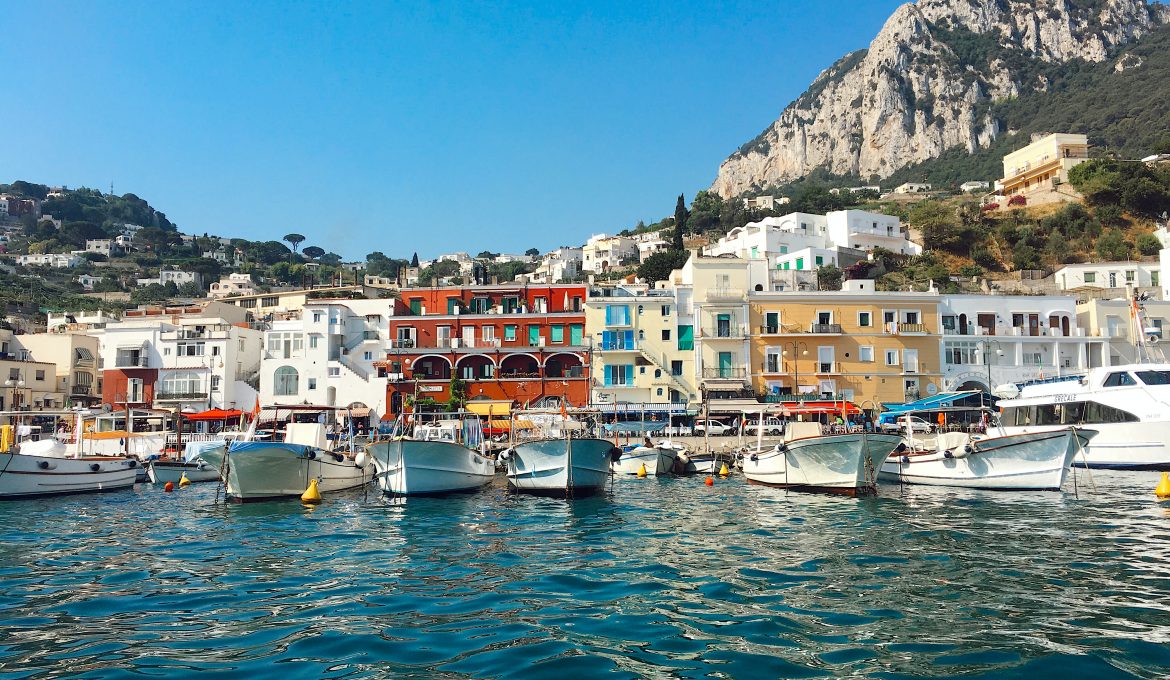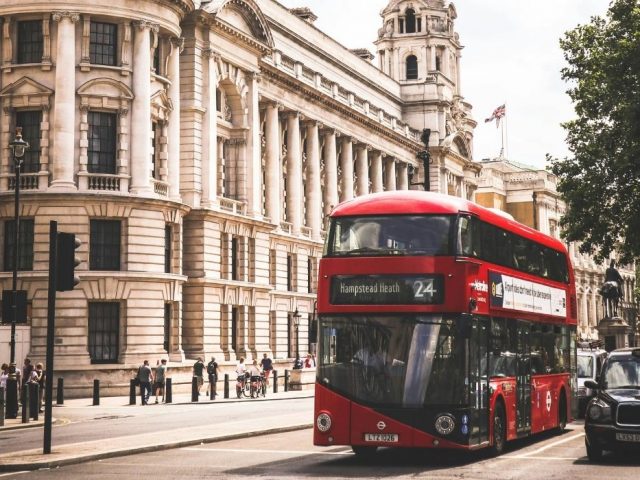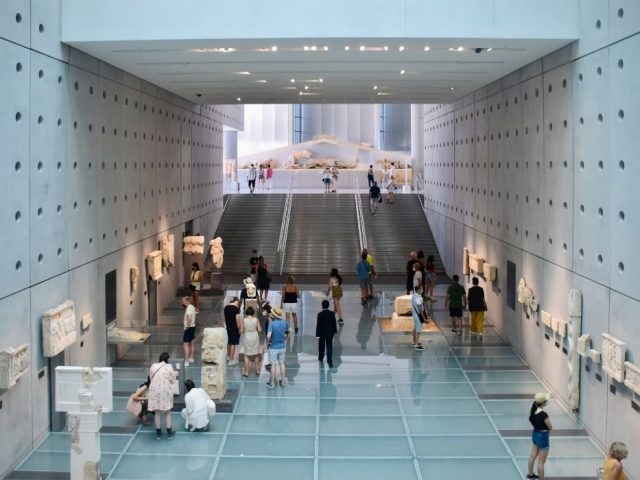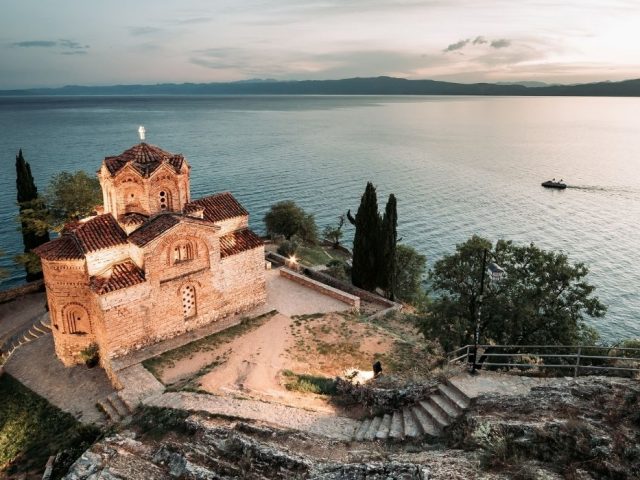Capri emerges as a gem of the Mediterranean. It captures everyone who is fortunate enough to set foot on its shores. After all, Capri is a mesmerising spot in the azure embrace of the Tyrrhenian Sea. It’s like a taste of Italian paradise. The renowned Blue Grotto of Capri is one of the amazing parts of this paradise. It is a marine cave, and the cave’s ethereal blue light is the reason why it has this name. The blue light bathes the cave’s interior and creates a surreal underwater world.
🛎️ Reminder: To explore the world with your digital tour guide, don’t forget to download Piri Guide! 😊
Where is Capri?
Capri is a small island located in the Tyrrhenian Sea, off the southern coast of Italy. It is part of the Campania region and is near the city of Naples. Capri has as stunning natural beauty, including rugged landscapes, crystal-clear waters, and picturesque cliffs. It is a popular tourist destination and has been a resort area since the days of the Roman Empire.
How to Go to Capri?
To get to Capri, you typically need to travel to the mainland of Italy, specifically to the city of Naples, as this is the primary gateway to the island.
- First, you’ll probably land at Naples International Airport (Aeroporto di Napoli-Capodichino). Naples is reachable by direct flights from a number of significant European cities.
- You can travel to the Port of Naples by taxi, shuttle bus, or private automobile from the Naples Airport. Depending on traffic, the trip normally takes 20 to 30 minutes.
- You can take a ferry or hydrofoil to Capri after reaching the Port of Naples. The two main departure locations are Mergellina and Molo Beverello. The primary port for hydrofoils and high-speed ferries to Capri is Molo Beverello, and it is frequently chosen.
— There are several ferry companies that operate between Naples and Capri, offering different types of vessels and schedules. Some popular ferry companies include Caremar, SNAV, and Molo Beverello.
When to Go to Capri?
The summer’s temperatures range from mild to hot. And the summer is Capri’s busiest travel season. But if you want a cultural trip, then September to November might be a good idea to visit Capri.
Places to Visit in Capri
We’ve made a list of must-visit places in Capri. Yet, we should remind you that you can find more on the Piri Guide mobile app. Piri Guide detects your location, offers you the best travel routes, and starts telling you the hidden stories of wherever you are. All you have to do is to get your headphones or earbuds and follow the path at your own pace. Then, don’t set out for your trip before downloading the digital travel guide! 😊
Piazza Umberto I
Piazzetta, Piazza Umberto I or a “chiazz” as the locals would call it, is the perfect place in Capri to immerse yourselves in the island’s extravagance and enjoy the relaxed island vibe. The Piazza Umberto is often compared to other squares in the world such as the Rossio Square in Lisbon or the Venetion Square in San Marco. Of course, the islanders probably think, the Piazzetta is the best amongst them, let’s see what you will think. The main element of the square is the clock tower, which is very often associated with the island of Capri.
Saint James' Charterhouse
The charterhouse was donated by Queen Giovanna I of Anjou, the Charterhouse of San Giacomo stands as Capri’s most ancient monastery. Within its walls, there is a museum dedicated to the German artist Karl Diefenbach, who belonged to the European Symbolism Movement and lived on Capri until his death in 1913. You can see his mesmerizing works here.
The convent is designed as three main buildings: an annexe, housing a pharmacy, and women’s chapel and open to the public; a building dedicated to the “lay brothers”, who are not monks but work at the monastery voluntarily, and the cloisters, enclosed rooms dedicated to those devoted to the monastic life.
Museo Casa Rossa di Anacapri
The Red House was named after its bright Pompeian red colour. It was built between 1876 and 1899 by a colonel of Louisiana named John Clay MacKowen. After a while, MacKowen started to gather archaeological finds he found in different places of the island, and his other numerous travels, in the Red House, and enriched the museum. After his death Landscape of Naples acquired the building and used the place as an exhibition space, after a restoration.
Villa Jovis
Villa Jovis is a Roman palace known as Villa Jupiter. The emperor Tiberius built it. He ruled the Roman empire for almost a decade in Capri and left 12 villas on the island before his death! He chose the cliff’s edge so that privacy and security were guaranteed for the emperor. The area was highly guarded back then to keep the emperor safe.
The Villa Jovis was divided into four distinct sections. Tiberius used the southern part of the palace complex to manage the Empire’s affairs. The eastern wing was probably used to host big events and parties. On the western side, there was a spacious open-air hall that provided stunning views of the Bay of Capri. The northern area of the palace was set aside for the Emperor’s living spaces.
If you want to explore Amalfi, check out our Amalfi Travel Guide!




